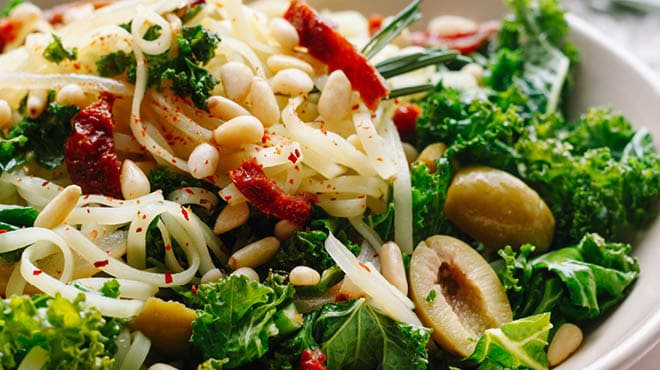Recent Posts
Brighten spring dishes with asparagus

Asparagus is a perennial flowering plant brought from Europe to North America hundreds of years ago. However, its history dates back to ancient Egypt, where images of it can be found on the walls of tombs. It originally grew wild along riverbanks or the seashore, preferring a soil too salty for other plants.
The world's top producers of asparagus are China, Peru and Germany. Most of the asparagus grown in the U.S. comes from three states: California, Washington and Michigan. Asparagus can take up to three years to produce a crop. It's harvested in the spring, and one plant will continue to produce for about 15 years. Under perfect growing conditions, asparagus can grow up to 10 inches in 24 hours.
Green is the most common color of asparagus, but white and purple have gained popularity. The white variety is picked before the spear breaks through the soil, so it's never exposed to the sun. Since it's only available for a few weeks, white asparagus is more expensive than green. Purple asparagus is pretty when raw but loses its color during cooking. The main difference between the colors is taste and texture. The nutritional value is virtually the same.
Asparagus can be part of a well-balanced diet. Low in fat and calories, one-half cup or five spears cooked contain only 20 calories. The primary nutrients in asparagus are vitamin K and folate. People on blood thinners may need to watch their vitamin K intake and should talk to their health care team to find out if it's OK to include asparagus in their diets.
After eating asparagus, some people notice their urine has a funky smell. That's due to asparagusic acid, which digestion breaks down into sulfur-containing compounds that give urine the distinctive asparagus odor and color. Only some people can smell this odor, and scientists are still trying to figure out why. But the temporary odor is no reason to pass on this healthful, versatile spring vegetable.
Usher in the season with one of these asparagus recipes from Mayo Clinic staff:
Penne with tomatoes, asparagus and goat cheese
Serves 2
1/3 pound whole-wheat penne pasta
1 cup asparagus, cut or snapped into 1-inch pieces
1 tablespoon water
1/2 cup halved cherry tomatoes
1/4 cup chopped fresh basil, plus whole leaves for garnish
1 tablespoon minced garlic
1/8 teaspoon freshly ground black pepper
2 ounces goat cheese
Fill a large pot 3/4 full of water and bring to a boil. Add the pasta and cook according to the package directions. Drain the pasta. While the pasta is cooking, put the asparagus and water in a microwave-safe bowl. Heat the asparagus on high power until tender-crisp, about 3 minutes. In a bowl, combine the cherry tomatoes, basil, garlic and pepper. Add the asparagus, pasta and goat cheese, and toss until well-mixed. Cool in the refrigerator for at least 20 minutes.
Divide the pasta between the plates. Garnish with fresh basil leaves and serve.
Nutritional information per 2-cup serving: 392 calories, 8 grams fat, 4 grams saturated fat, 150 milligrams sodium, 65 grams carbohydrates, 10 grams fiber, 17 grams protein
Asparagus with hazelnut gremolata
Serves 4
Gremolata is a chunky green sauce traditionally eaten in Italy with meat, poultry or fish.
1 pound asparagus, tough ends removed, then peeled if skin is thick
1 clove garlic, minced
1 tablespoon chopped fresh flat-leaf (Italian) parsley, plus sprigs for garnish
1 tablespoon finely chopped toasted hazelnuts (filberts)
1/4 teaspoon finely grated lemon zest, plus extra for garnish
2 teaspoons fresh lemon juice
1 teaspoon extra-virgin olive oil
1/4 teaspoon salt
In a large pot fitted with a steamer basket, bring about 1 inch of water to a boil. Add the asparagus, cover and steam until tender-crisp, about 4 minutes. Remove from the pot. In a large bowl, combine the asparagus, garlic, chopped parsley, hazelnuts, 1/4 teaspoon lemon zest, lemon juice, olive oil and salt. Toss well to mix and coat. Arrange the asparagus neatly on a serving platter and garnish with parsley sprigs and lemon zest. Serve immediately.
Nutritional information per 3/4-cup serving: 50 calories, 2 grams fat, 0 grams saturated fat, 148 milligrams sodium, 5 grams carbohydrates, 3 grams fiber, 3 grams protein
By Mayo Clinic Health System staff.






